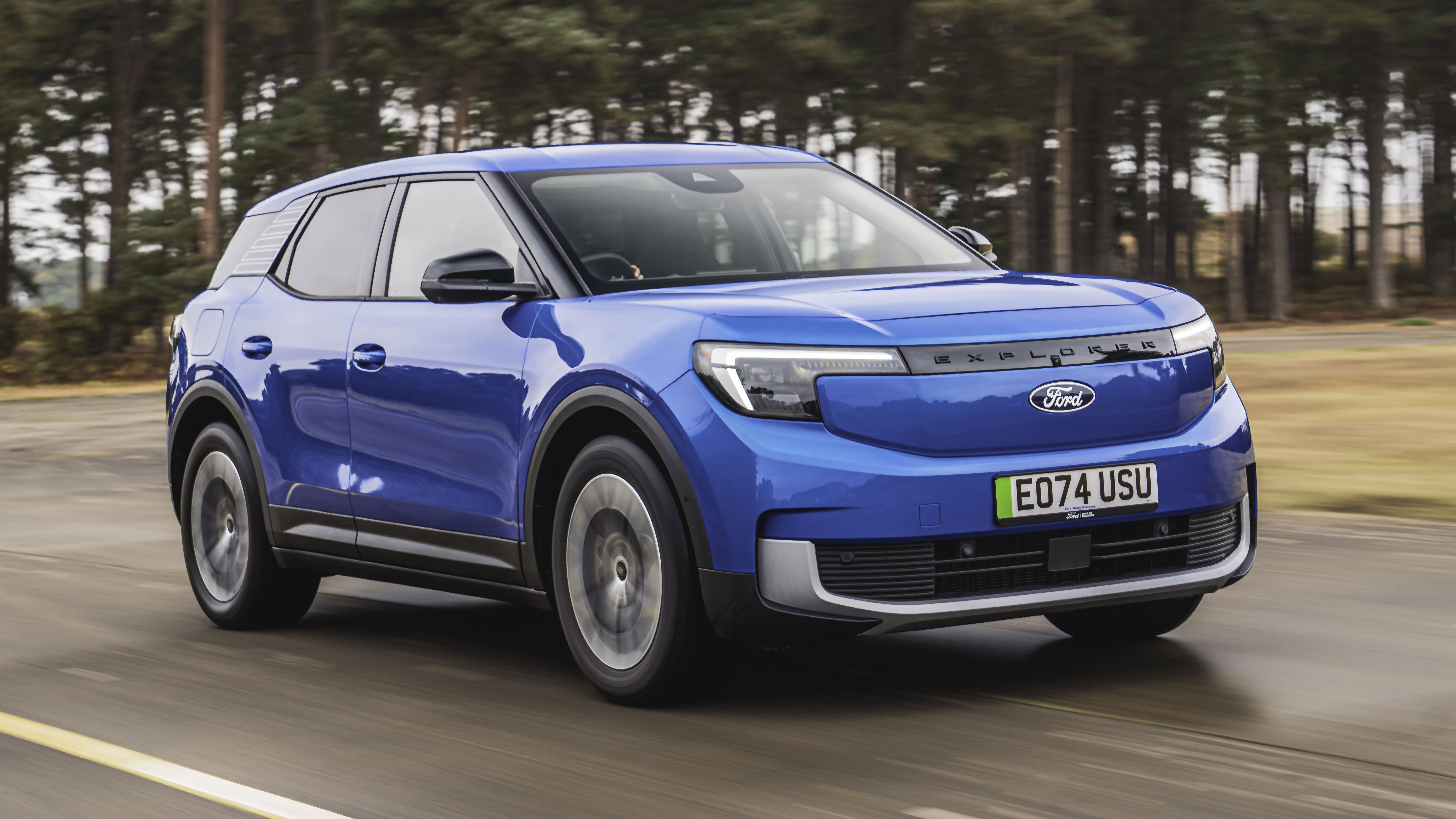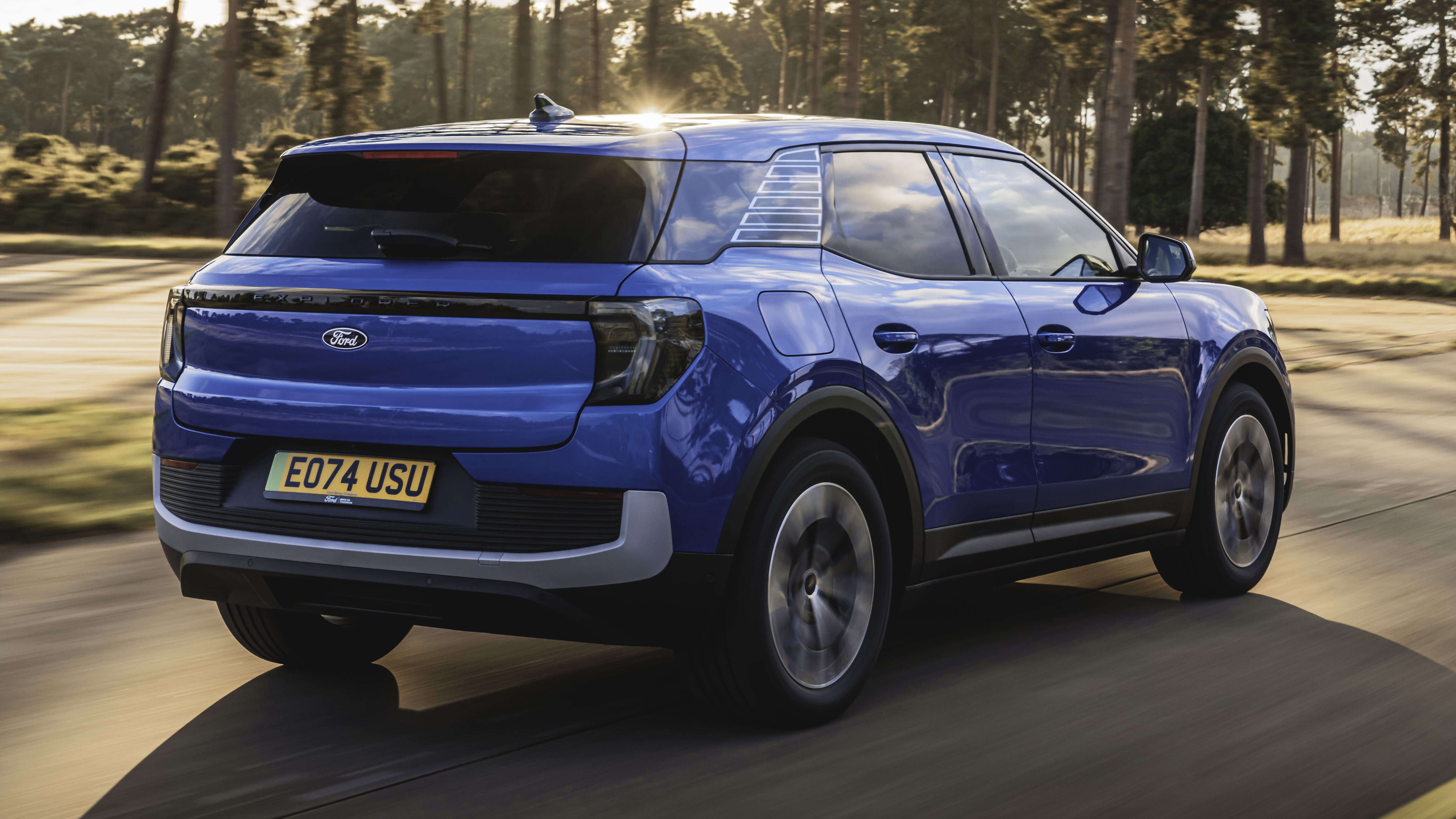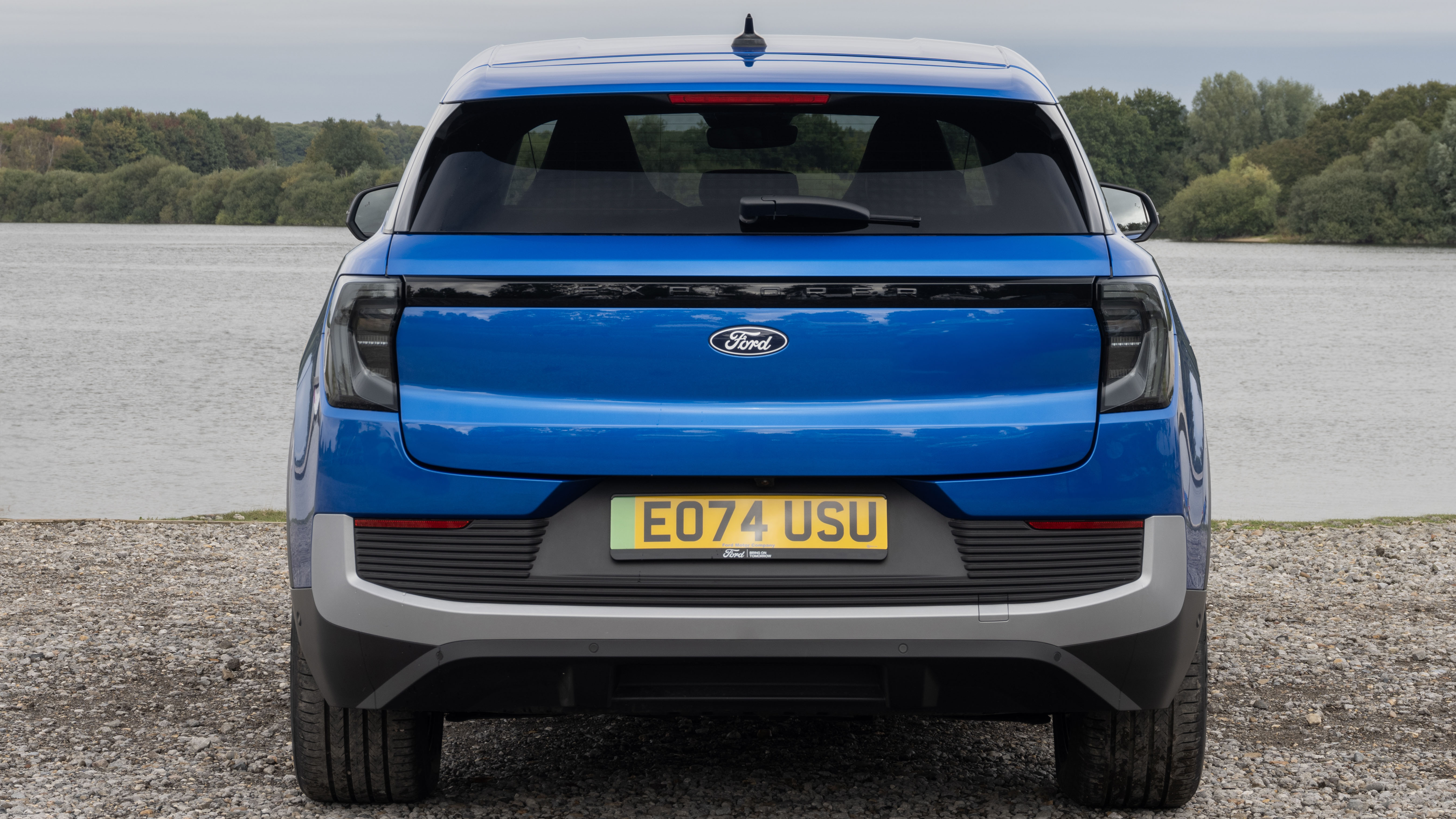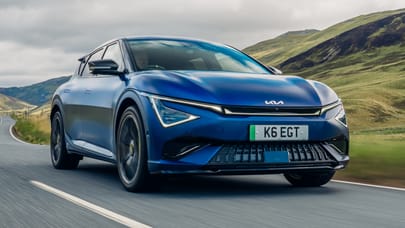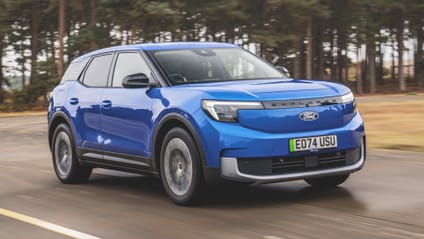
Good stuff
Useful cabin, OK to drive, well specified
Bad stuff
More middle of the road than Ford thinks
Overview
What is it?
A crude TL;DR, it's a white-labelled Volkswagen ID.4. Ford has taken VW's platform and put its own body and interior on it. From the point of view of an actual human car buyer, not a spreadsheet-headed car industry analyst, it's a mid-size electric family crossover.
Which means it's pitching into a market overpopulated with rivals. The Explorer aims to distinguish itself by looking more boxy and 'adventure minded' than most of its more lozenge-shaped rivals.
Ford people claim with a straight face that the ID.4 isn't a rival, because it's longer but has no more cabin room. Really? Do people even know, let alone care, about a 16mm length gap?
Other rivals in no particular order… Tesla Model X, Skoda Enyaq, Peugeot e-3008, Nissan Ariya, Kia EV6, Hyundai Ioniq 5, BMW iX1, Renault Scenic, Volvo EX40, Toyota bZ4x. Some of those look more coupe-like, some more chunky, some are slightly smaller, some slightly larger, but all do a similar job at a similar price. You can get Ford's own Mustang Mach-E for a little more.
Actually, our opening line was a bit unfair. This is more than merely an ID.4 wearing Ford clothing. There's also been some unique suspension tuning – hardware and software – so it feels somewhat like a Ford. Plus, say the engineers, Ford has had input into the latest generation of VW Group motors, batteries, and control systems. So the fact those shared components come from VW's supply base doesn't mean they don't embody Ford's knowhow. The Explorer is made at Ford's Cologne plant in Germany.
Talk to me about the styling…
Design matters when several VW Group cars are similar underneath. The name gives a clue: the original Explorer is a hunky and (in a bygone era) vast selling petrol-powered American SUV. While the European electric Explorer is completely different, and sized for our roads, it's supposed to share that spirit. So its blocky outline invokes the psychographic terrain of freedom and adventure. This is Ford leaning into its American roots.
Despite the boxiness, design director Amko Leenarts says it's not aggressive. "Aggressive cars are for people who are afraid of the world." Also, lots of attention has been paid to aero, so the drag is low enough not to staunch range, and wind noise is decently subdued.
It doesn't look like other Fords. The company's new strategy is that each of its models has its own distinctive shape rather than relying on common themes.
And inside?
Room is competitive all round. A cloth-covered soundbar across the dash plus light grey trim pieces put some welcome texture into things.
The standout item is the centre screen. Its base slides fore and aft, so you can either have it low down and sloped, or raise it more upright. We went for the latter, to make the quick buttons at the top more reachable. It also picks up fewer reflections that way.
Further aft between the seats you also get a big and cleverly divisible console box. Like, laptop-bag big.
Has Ford really made it drive like a Ford?
To a decent extent, it has. The suspension is tautly sprung but not harsh. The steering is very accurate and well matched to spring and damper rates, so it turns progressively and is an easy car to thread along winding roads. Overall it feels lighter than it is. But then, it is 2.1 tonnes.
The stats are 8.7 seconds 0-62mph in the entry RWD, 6.4s in the mid-spec RWD and 5.3s in the AWD. None of them bother with the false sound effects of the Mustang Mach-E. They're always quiet and refined.
Click on the Driving tab of this review for more detail.
What are the battery and motor options? And how's the range?
The base single-motor version gets a 52kWh battery, good for 233 miles WLTP. One up gets you a 77kWh battery, good for 374 miles WLTP. That's impressive and should translate to 275 motorway miles in the UK or 325 in mixed driving.
The dual-motor version has a 79kWh pack, which doesn't sound much more but it can charge marginally faster because it has newer chemistry (VW Group launched it a couple of months earlier in the Born VZ). That means 26 minutes 10-80 per cent versus 28 minutes for the RWD.
Our choice from the range

What's the verdict?
The Explorer certainly has its work cut out in a market stacked with rivals. But why does every manufacturer sell a mid-size electric crossover? Because so many people buy them.
And they'll like the Explorer. It hits the touchpoints: good looking inside and out, and practical with it. It's easy – if not exactly fun – to drive. The electric stuff (range and charging) is competitive.
This is a new Ford direction. The company is making a move upmarket, towards bigger profit per car and away from the mass market petrol hatches of all our memory. Unlike Renault or Hyundai or VW, Ford can't make money on those. Mustang Mach-E buyers in Europe are mostly newcomers to Ford, and they expect the same will be true of the Explorer. This is a brave repositioning for the brand, but the car itself is up to the job. Albeit software updates and electrical improvements mean it's arrived nine months later than Ford first planned, so lots of you will already have bought a rival.
It's not a car for a driver to fall in love with, but neither are rivals. Still, as a family car it does have a likeable character. It's more than just another electrical appliance.
The Rivals
Trending this week
- Car Review
BMW iX3




